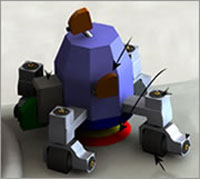 The team behind the pan-European research project NozzleInspect has built a remote controlled prototype robot that uses state of the art ultrasonic probes to detect tiny, millimetric defects in the nozzle, a crucial, sensitive component used to control the flow of water that cools the nuclear reactor.
The team behind the pan-European research project NozzleInspect has built a remote controlled prototype robot that uses state of the art ultrasonic probes to detect tiny, millimetric defects in the nozzle, a crucial, sensitive component used to control the flow of water that cools the nuclear reactor.
May 13th, 2013
Read more
Neurobiologists at the University of Chicago show how an organism can sense a tactile stimulus, in real time, through an artificial sensor in a prosthetic hand.
May 10th, 2013
Read more
This thing has all the right moves. Three University of Alabama in Huntsville master's students in software engineering decided to pump up the volume with an Android app that cranks a robot into the popular Gangnam Style dance.
May 9th, 2013
Read more
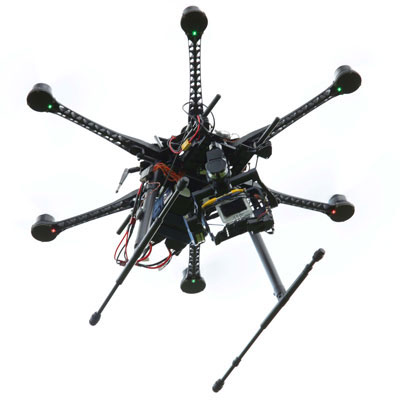 With campus safety and security in mind, engineering students at The University of Alabama in Huntsville are working with the campus police department to perfect unmanned aerial vehicle (UAV) technologies for use on-campus.
With campus safety and security in mind, engineering students at The University of Alabama in Huntsville are working with the campus police department to perfect unmanned aerial vehicle (UAV) technologies for use on-campus.
May 9th, 2013
Read more
 University of Pennsylvania researchers showed what happened when they taught their RHex legged robot to jump. The results are pretty amazing.
University of Pennsylvania researchers showed what happened when they taught their RHex legged robot to jump. The results are pretty amazing.
May 9th, 2013
Read more
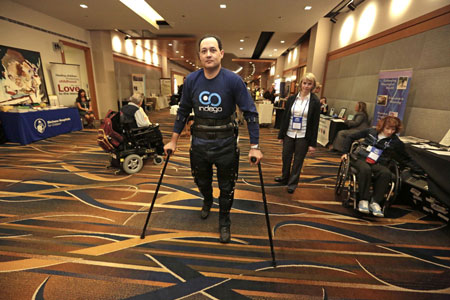 When Michael Gore stands, it's a triumph of science and engineering. Eleven years ago, Gore was paralyzed from the waist down in a workplace accident, yet he rises from his wheelchair to his full 6-foot-2-inches and walks across the room with help from a lightweight wearable robot.
When Michael Gore stands, it's a triumph of science and engineering. Eleven years ago, Gore was paralyzed from the waist down in a workplace accident, yet he rises from his wheelchair to his full 6-foot-2-inches and walks across the room with help from a lightweight wearable robot.
May 9th, 2013
Read more
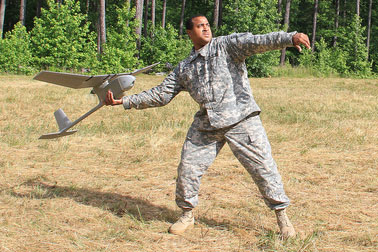 Drones have become a symbol for the end of the 'golden age of privacy' and widespread fears about big data, ubiquitous video recording and a host of other technologies that portend a future in which privacy is nonexistent.
Drones have become a symbol for the end of the 'golden age of privacy' and widespread fears about big data, ubiquitous video recording and a host of other technologies that portend a future in which privacy is nonexistent.
May 7th, 2013
Read more
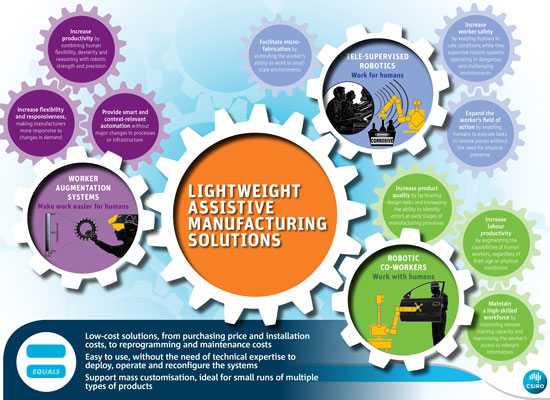 A new breed of industrial robots and ICT systems could transform Australia's manufacturing sector, creating safer environments and more efficient factories, according to a CSIRO whitepaper.
A new breed of industrial robots and ICT systems could transform Australia's manufacturing sector, creating safer environments and more efficient factories, according to a CSIRO whitepaper.
May 7th, 2013
Read more
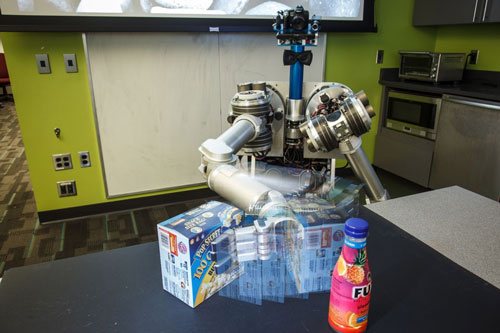 A robot can struggle to discover objects in its surroundings when it relies on computer vision alone. But by taking advantage of all of the information available to it - an object's location, size, shape and even whether it can be lifted - a robot can continually discover and refine its understanding of objects, say researchers at Carnegie Mellon University's Robotics Institute.
A robot can struggle to discover objects in its surroundings when it relies on computer vision alone. But by taking advantage of all of the information available to it - an object's location, size, shape and even whether it can be lifted - a robot can continually discover and refine its understanding of objects, say researchers at Carnegie Mellon University's Robotics Institute.
May 6th, 2013
Read more
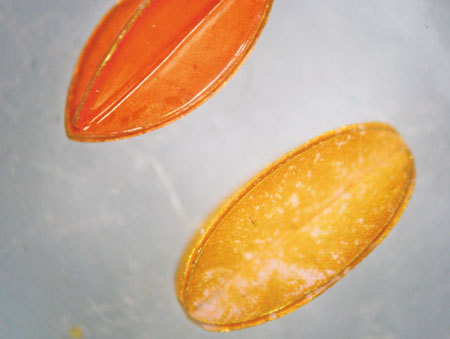 When the retina's supply of blood and oxygen runs low, physicians have to react quickly to preserve a patient's eyesight. But up until now there have been no methods sensitive enough to measure how well the eye is oxygenated. A microrobot invented by ETH researchers may come to the rescue.
When the retina's supply of blood and oxygen runs low, physicians have to react quickly to preserve a patient's eyesight. But up until now there have been no methods sensitive enough to measure how well the eye is oxygenated. A microrobot invented by ETH researchers may come to the rescue.
May 6th, 2013
Read more
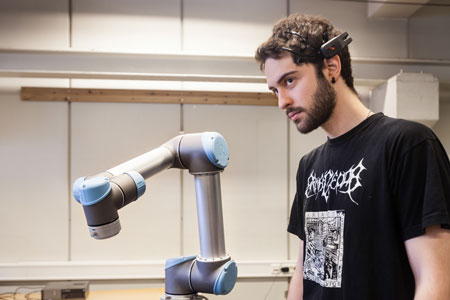 Facial grimaces generate major electrical activity (EEG signals) across our heads, and the same happens when Angel concentrates on a symbol, such as a flashing light, on a computer monitor. In both cases the electrodes read the activity in the brain. The signals are then interpreted by a processor which in turn sends a message to the robot to make it move in a pre-defined way.
Facial grimaces generate major electrical activity (EEG signals) across our heads, and the same happens when Angel concentrates on a symbol, such as a flashing light, on a computer monitor. In both cases the electrodes read the activity in the brain. The signals are then interpreted by a processor which in turn sends a message to the robot to make it move in a pre-defined way.
May 4th, 2013
Read more
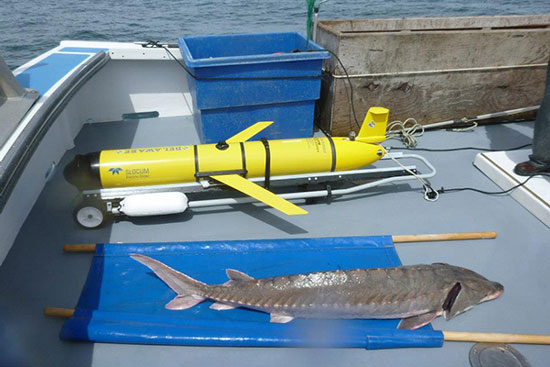 Researchers at the University of Delaware and Delaware State University are using satellites, acoustic transmitters, an underwater robot and historical records to pinpoint the ocean conditions that the fish prefer during migrations.
Researchers at the University of Delaware and Delaware State University are using satellites, acoustic transmitters, an underwater robot and historical records to pinpoint the ocean conditions that the fish prefer during migrations.
May 4th, 2013
Read more
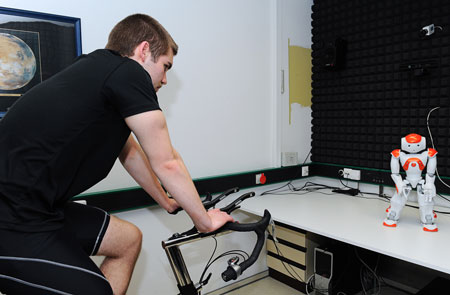 The two robots Flobi and Nao worked full time for three weeks in an isolation study in Cologne. Scientists from Bielefeld University's Research Institute for Cognition and Robotics (CoR-Lab) were studying how these intelligent assistance systems can help astronauts to keep fit - both physically and mentally.
The two robots Flobi and Nao worked full time for three weeks in an isolation study in Cologne. Scientists from Bielefeld University's Research Institute for Cognition and Robotics (CoR-Lab) were studying how these intelligent assistance systems can help astronauts to keep fit - both physically and mentally.
May 3rd, 2013
Read more
Three types of robots, named rotorcraft UAVs (unmanned aircraft vehicles), transformable ruins search and rescue robot, and robotic life-detector, also landed in the quake-hit area with the researchers. This is their first application in an earthquake rescue and relief mission.
May 3rd, 2013
Read more
Researchers are developing systems that can analyze people's needs to determine the best way to achieve their goals.
May 3rd, 2013
Read more
Researchers have developed and demonstrated a new robotic bird, Robo Raven, whose wings flap completely independently of each other, and also can be programmed to perform any desired motion, enabling the bird to perform aerobatic maneuvers. This is the first time a robotic bird with these capabilities has been built and successfully flown.
May 3rd, 2013
Read more
CSIRO celebrates Global Star Wars Day by unveiling the next generation of robotics research.
May 3rd, 2013
Read more
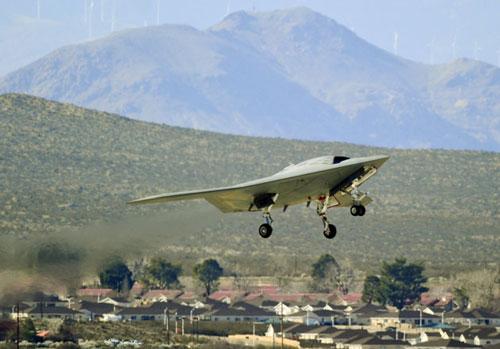 Killer robots that can attack targets without any human input 'should not have the power of life and death over human beings,' a new draft U.N. report says.
Killer robots that can attack targets without any human input 'should not have the power of life and death over human beings,' a new draft U.N. report says.
May 2nd, 2013
Read more
 The team behind the pan-European research project NozzleInspect has built a remote controlled prototype robot that uses state of the art ultrasonic probes to detect tiny, millimetric defects in the nozzle, a crucial, sensitive component used to control the flow of water that cools the nuclear reactor.
The team behind the pan-European research project NozzleInspect has built a remote controlled prototype robot that uses state of the art ultrasonic probes to detect tiny, millimetric defects in the nozzle, a crucial, sensitive component used to control the flow of water that cools the nuclear reactor. 
 Subscribe to our Robotics, AI & SmartTech News feed
Subscribe to our Robotics, AI & SmartTech News feed









